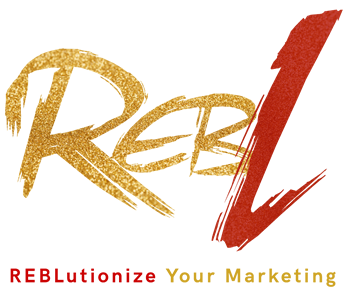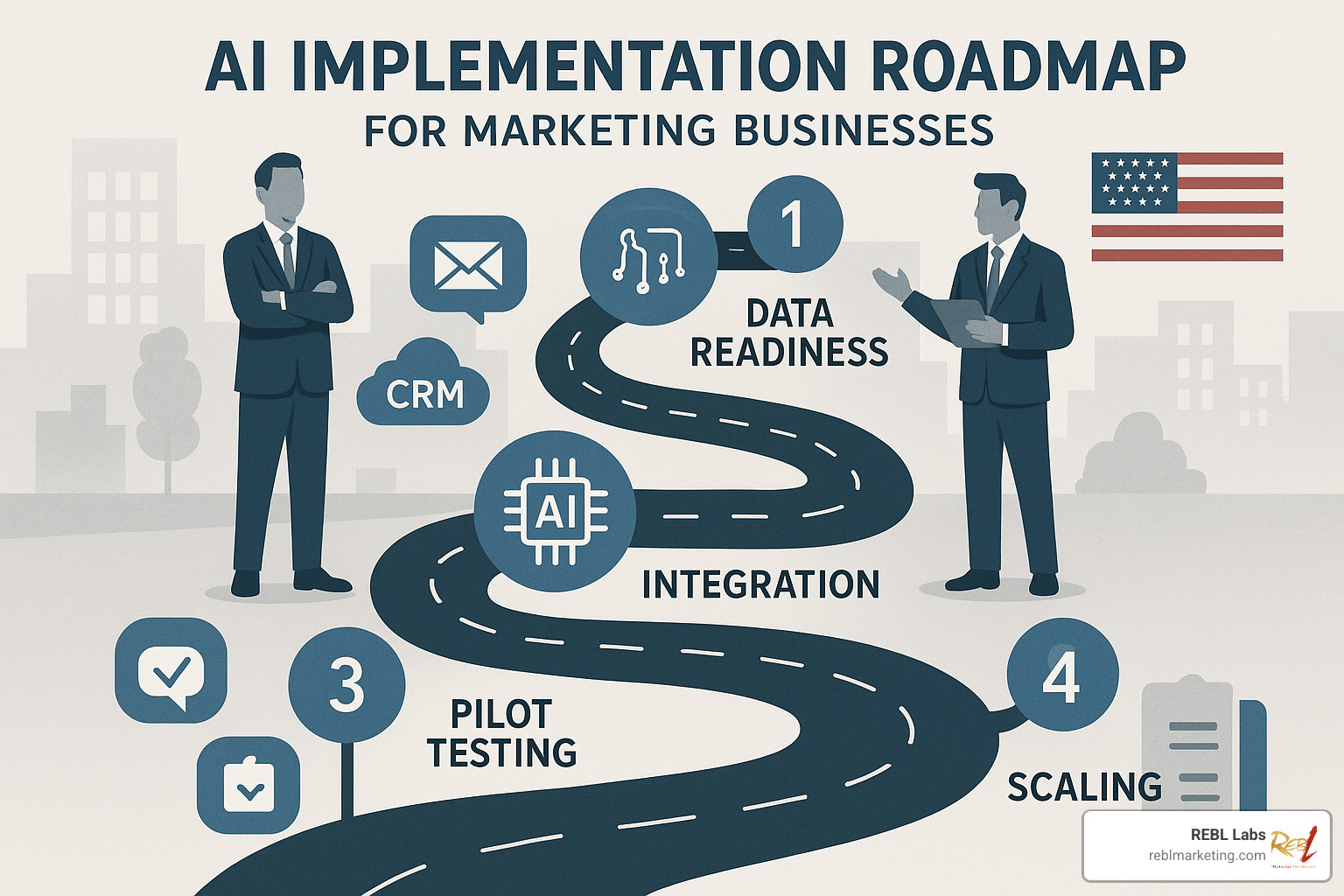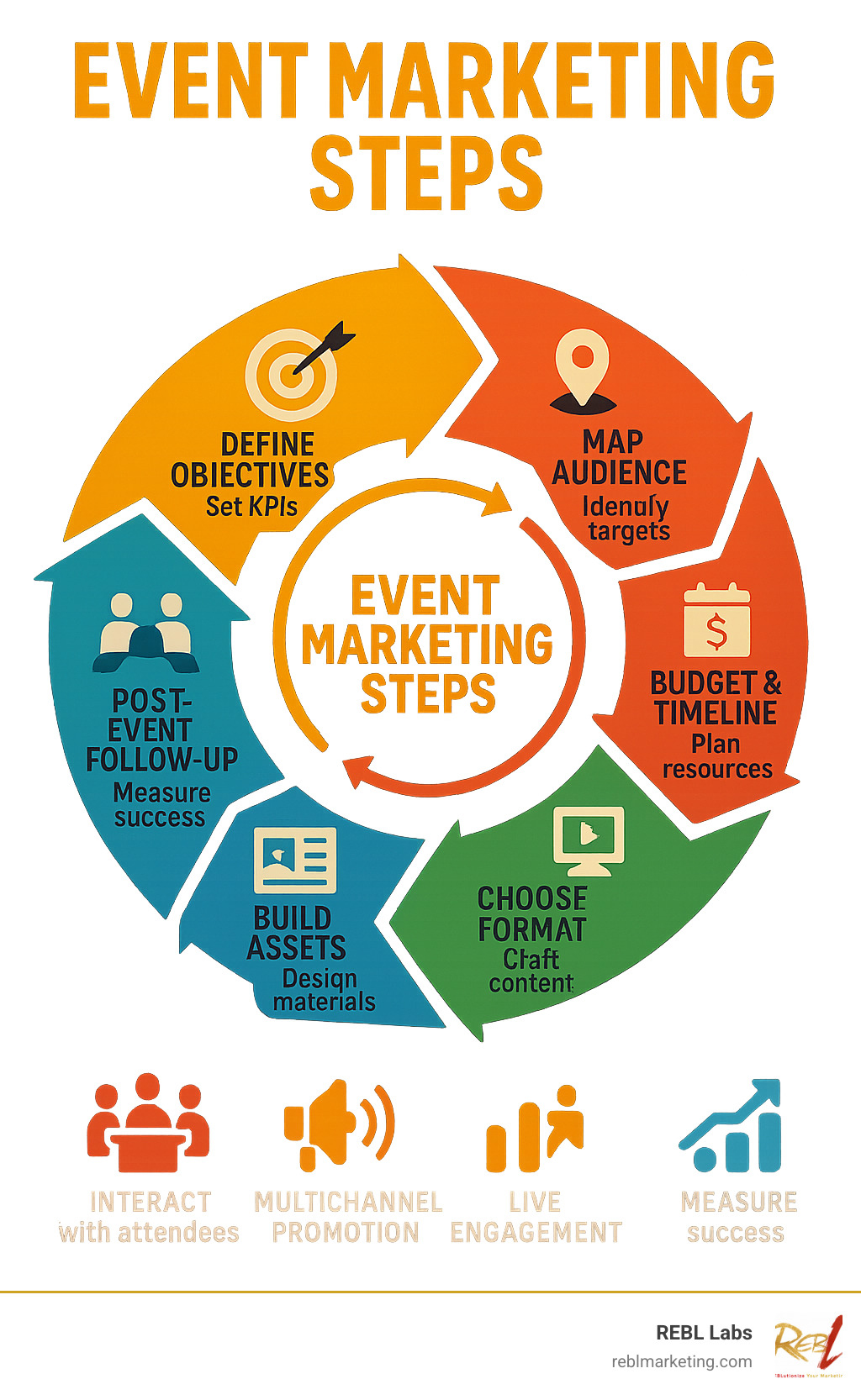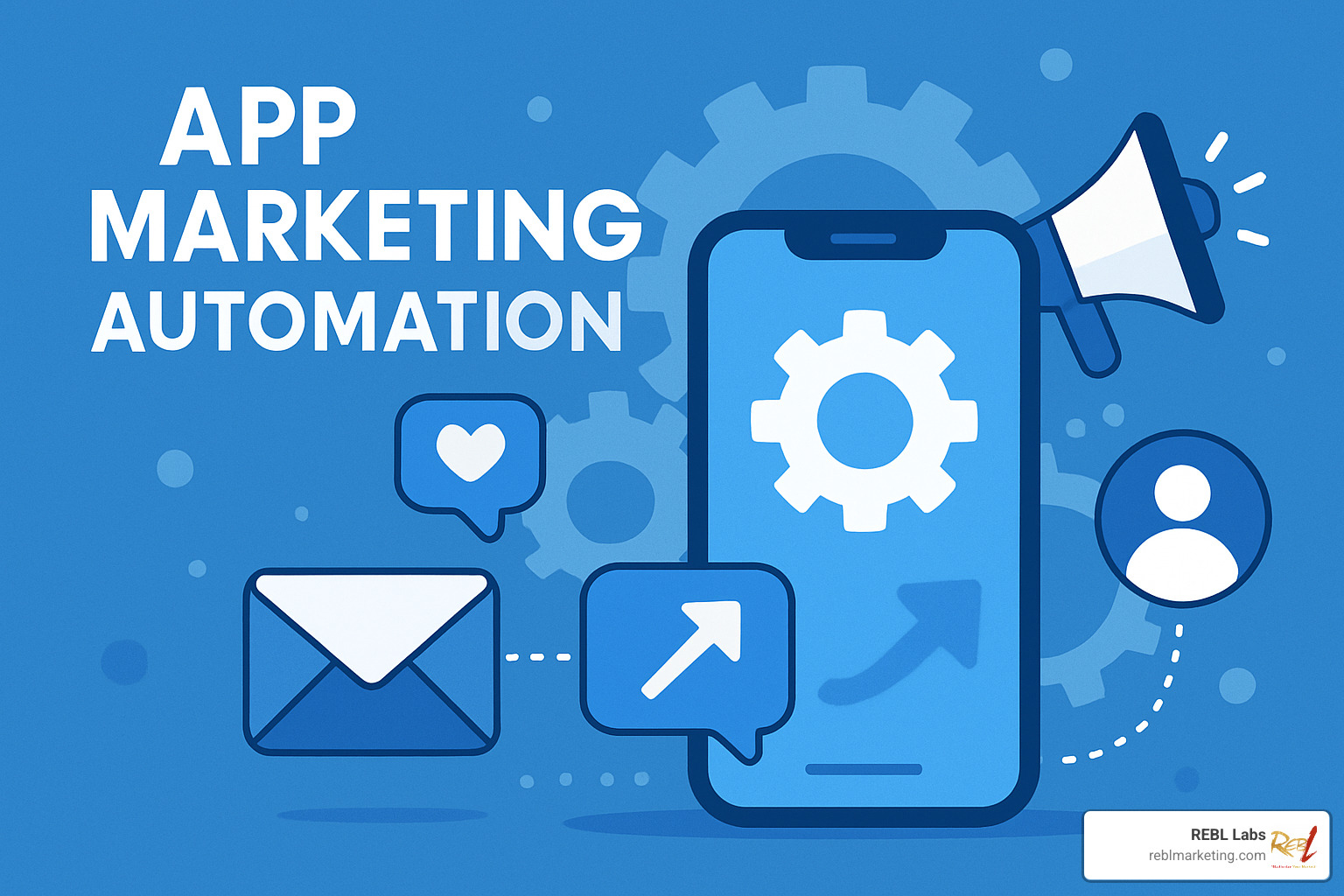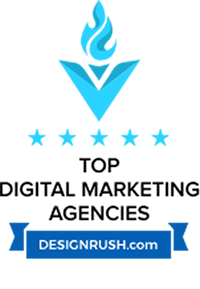Finding Your Match Made in Marketing Heaven: B2B Web Marketing Agencies
Why Finding the Right B2B Web Marketing Agency Changes Everything
A b2b web marketing agency specializes in helping businesses market their products and services to other businesses through strategic digital marketing, lead generation, and sales enablement. Here’s what they typically offer:
Core Services:
• Website design and optimization for business audiences
• Account-based marketing (ABM) and demand generation
• Content marketing and thought leadership
• SEO and paid advertising campaigns
• Marketing automation and CRM integration
• Sales enablement and lead nurturing
Key Benefits:
• Generate qualified leads through longer sales cycles (4-7 months average)
• Steer complex buyer committees (12-14 decision-makers per sale)
• Create educational content for the 67% of B2B buyer journey that happens online
• Measure ROI through pipeline velocity and conversion tracking
B2B marketing is fundamentally different from consumer marketing. Your buyers aren’t impulse shopping—they’re making strategic decisions that affect their entire organization. The average B2B sale requires 7-10 touches and involves multiple stakeholders who need to be educated, not just sold to.
Yet only 8.2% of B2B leaders feel they have very effective messaging, according to recent research. This messaging gap, combined with complex sales cycles and the need for sustained nurturing, makes choosing the right agency partner critical for growth.
I’m REBL Risty, founder of REBL Marketing, where I’ve spent over two decades helping B2B companies build scalable marketing systems that actually drive revenue. As someone who’s worked with numerous b2b web marketing agency partners and built marketing operations across multiple industries, I’ve seen what separates the game-changers from the money-drains.

Why This Guide Matters
The stakes couldn’t be higher. B2B companies that lack a shared CRM cannot truly understand the effects of their marketing efforts or work to improve them over time. Without proper measurement and attribution, you’re essentially flying blind with your marketing budget.
We’ve researched successful agency partnerships that generated 300% ROI within the first 18 months, boosted inbound leads from zero to over 2,000, and achieved dramatic results like 86% increases in marketing-qualified leads over six months. The difference between success and failure often comes down to choosing an agency that understands your unique B2B challenges and has the proven systems to address them.
B2B vs B2C: Why Specialized Agencies Matter
Here’s the truth: B2B marketing is a completely different beast than consumer marketing. While a B2C company might win customers with a clever Instagram ad or flash sale, B2B sales happen in boardrooms with spreadsheets, committee meetings, and months of careful consideration.
Think about your own buying process at work. When you’re purchasing software for your team or choosing a new vendor, you’re not making an impulse decision. You’re researching options, getting input from colleagues, building a business case, and probably losing sleep over whether you’re making the right choice. Your prospects are going through this exact same process.
The numbers paint a clear picture of just how different B2B really is. The average B2B sale requires 7-10 touches across multiple channels. You’re not just convincing one person—you’re educating and nurturing 12-14 decision-makers who all have different concerns and priorities. And unlike that Amazon purchase that takes 30 seconds, B2B sales cycles typically run 4-7 months.
Here’s what really matters: 67% of the buyer’s journey happens online before prospects ever talk to your sales team. They’re reading your case studies, comparing your features, and forming opinions about your company long before they fill out a contact form.
Scientific research on first-impressions & UX reveals something crucial: it takes just 2.6 seconds for users to form a first impression of your website. In B2B, where trust and credibility can make or break a six-figure deal, those 2.6 seconds are everything.
This is exactly why working with a specialized b2b web marketing agency makes such a difference. They understand that your prospects aren’t browsing during their lunch break—they’re doing serious research that could affect their career and company.
The Complex Buyer Journey
Remember when B2B marketing followed a neat little funnel? Those days are long gone. Today’s B2B buyers are 80% mobile and incredibly sophisticated in how they research solutions. They might find you through a LinkedIn article, dive deep into your competitor’s pricing, circle back to read your case studies, and then disappear for two months while they handle other priorities.
The modern B2B buyer journey looks more like a spider web than a funnel. 57% of the decision journey happens online, but it’s not linear. Prospects jump between awareness and consideration phases, involve new stakeholders who restart the research process, and often engage with your content multiple times before they’re ready to talk.
This creates a unique challenge: your marketing needs to be educational enough for someone just learning about your category, but detailed enough for someone ready to make a decision. You need thought leadership content that builds trust, technical resources that answer detailed questions, and social proof that reduces risk.
A generic marketing agency might create beautiful campaigns, but they won’t understand the nuanced dance of B2B decision-making. They won’t know that your prospects need to see pricing information early (even if you prefer not to show it), or that case studies from similar companies carry more weight than flashy testimonials.
Metrics That Matter for B2B
Here’s where many B2B companies get tripped up: they measure the wrong things. Website traffic and social media followers might make you feel good, but they don’t pay the bills.
The metrics that actually matter in B2B are tied directly to revenue. Marketing Qualified Leads (MQLs) tell you how many prospects have shown genuine buying interest. Sales Qualified Leads (SQLs) show you which of those MQLs your sales team believes are worth pursuing. Pipeline velocity reveals how quickly deals move through your sales process, and proper attribution helps you understand which marketing activities actually drive revenue.
The best b2b web marketing agency partners obsess over these business metrics. They don’t just report on impressions and clicks—they show you exactly how their work translates into pipeline and revenue. They understand that in B2B, a single qualified lead can be worth thousands of dollars, making precision far more valuable than reach.
This focus on business outcomes is what separates agencies that truly understand B2B from those that are just applying consumer marketing tactics to business audiences. The difference shows up in your results, your sales team’s satisfaction, and ultimately, your bottom line.
Must-Have Services from a B2B Web Marketing Agency

When you’re evaluating a b2b web marketing agency, it’s easy to get overwhelmed by long lists of services. But after working with hundreds of B2B companies, I’ve learned that success comes down to six core capabilities that work together like a well-oiled machine.
Think of it this way: your ideal agency should be able to attract the right prospects, convert them into leads, and then nurture those leads until they’re ready to buy. That requires expertise in website optimization, content creation, demand generation, conversion optimization, sales enablement, and marketing automation.
Website Design & UX for Business Audiences
Your website is where first impressions happen, and in B2B, those impressions carry enormous weight. Research shows that 42% of people will leave a website if functionality isn’t up to scratch, and 75% judge your company’s credibility based on design alone.
But here’s what many agencies miss: B2B website design isn’t about winning design awards. It’s about building trust with busy executives who are evaluating whether your company can solve their problems.
Your agency should understand that fast load times are non-negotiable—each second of delay can reduce conversions by 7%. They need to ensure your site works flawlessly on mobile devices, since 80% of B2B buyers use mobile at work. Most importantly, they should design with your specific buyer journey in mind, creating clear paths for different types of visitors.
The best agencies treat your website as a credibility engine first and a lead generation tool second. When prospects trust you, conversion becomes much easier.
Content & SEO Engine
Content marketing in B2B isn’t about going viral or chasing trending topics. It’s about creating educational resources that help prospects steer complex purchasing decisions. The most effective agencies understand this fundamental difference.
Your agency should excel at creating case studies that demonstrate real-world results, not just generic success stories. They need to develop pillar pages that establish your thought leadership in your industry. And they should understand how to create content that serves both SEO and lead generation goals simultaneously.
This is where SEO strategy becomes crucial. The right content strategy ensures your educational resources reach prospects exactly when they’re looking for solutions. Content marketing becomes your competitive advantage when it’s done strategically.
The difference between lead generation goals and brand awareness goals should drive your content strategy. Gated whitepapers and ROI calculators capture leads, while ungated thought leadership articles and industry trend analysis build long-term brand recognition.
| Lead Generation Goals | Brand Awareness Goals |
|---|---|
| Gated whitepapers and guides | Ungated thought leadership articles |
| Product demo videos | Industry trend analysis |
| ROI calculators | Podcast appearances |
| Case study downloads | Speaking engagements |
| Free trial offers | Social media thought leadership |
Demand Generation & ABM
Here’s where many agencies fall short: they treat B2B demand generation like consumer marketing with a business twist. That’s a recipe for mediocre results.
Effective demand generation in B2B is about high-intent targeting—identifying prospects who are actively looking for solutions like yours. Your agency should understand how to create sophisticated nurture sequences that educate prospects over months, not days.
Account-Based Marketing (ABM) takes this even further by treating your most valuable prospects like markets of one. The best agencies combine traditional demand generation with ABM strategies, using shared CRM data to create personalized experiences for key accounts.
This requires tight integration between marketing and sales teams. Your agency should facilitate this alignment, not just promise it. They need to understand your sales process well enough to create marketing campaigns that actually support how your team sells.
When demand generation and ABM work together, you stop chasing random leads and start building relationships with prospects who are genuinely likely to buy. That’s when marketing starts feeling like a revenue engine instead of an expense.
Evaluating & Choosing Your Ideal Partner
Finding the right b2b web marketing agency feels overwhelming when you’re drowning in proposals and slick presentations. I’ve watched too many smart business leaders get swayed by flashy demos or rock-bottom prices, only to find themselves stuck with an agency that doesn’t understand their world.
The truth is, choosing an agency partner is more like hiring a key executive than buying a service. You need someone who truly gets your business, your customers, and your growth challenges.
Start with Ideal Customer Profile (ICP) alignment. The best agencies dig deep into your buyer personas before they even think about tactics. They should be asking tough questions about your customers’ pain points, buying committees, and decision-making processes. If an agency jumps straight into solutions without understanding your market dynamics, that’s your first warning sign.
Industry expertise makes all the difference. Some agencies claim they can serve everyone, but the reality is that B2B marketing varies dramatically across industries. A SaaS company’s lead nurturing needs are completely different from a manufacturing firm’s. The agencies that deliver exceptional results have deep knowledge of your specific sector’s challenges, regulations, and buyer behavior.
Engagement models matter more than you think. Some agencies push retainers, others prefer project work, and the smartest ones offer performance-based contracts. The right model depends on your goals and internal capabilities. If you need ongoing support across multiple channels, retainers make sense. If you have a specific challenge to solve, project-based work might be perfect.
Here’s what separates the winners from the wannabes: guaranteed KPIs. The best agencies stake their reputation on measurable business outcomes. They’re willing to tie their compensation to your success because they’re confident in their ability to deliver. More info about balancing quality & scale shows how top-tier agencies maintain excellence while growing their client base.
Red Flags & Green Flags in a b2b web marketing agency
After two decades in this business, I can spot trouble from a mile away. Watch out for agencies obsessed with vanity metrics like social media likes or website impressions. These numbers might look impressive in reports, but they don’t pay your bills or grow your business.
Siloed teams are another major red flag. If the SEO team doesn’t talk to the paid ads team, and the content creators work in isolation from the web developers, you’re going to get disjointed campaigns that waste your budget. B2B marketing requires seamless integration across all channels.
Lack of data transparency should send you running. Some agencies treat their reporting like state secrets, giving you summary dashboards without real insight into what’s working and what isn’t. You deserve real-time access to your data and clear explanations of performance.
On the flip side, green flags include deep understanding of B2B sales cycles. The right agency knows that your buyers need 7-10 touches over months, not quick conversions. They understand buyer committees and complex decision-making processes.
Look for integrated approaches where every marketing channel works together toward common goals. The best agencies create cohesive experiences across your website, content, email campaigns, and sales enablement tools.
Strong references from similar companies tell you everything you need to know. Don’t just ask for case studies—talk to actual clients about their experience working with the agency day-to-day.
Pricing & Engagement Models Demystified
Agency pricing doesn’t have to be mysterious, but many agencies make it complicated on purpose. Let me break down the four main models so you can choose what works best for your situation.
Retainer models involve monthly fees for ongoing services. They work well when you need consistent support across multiple marketing channels. The predictable costs make budgeting easier, and agencies can plan long-term strategies without worrying about project renewals.
Project-based pricing uses fixed fees for specific deliverables like website redesigns or campaign launches. This approach gives you clear scope and budget control, making it perfect for companies with defined, short-term needs.
Performance-based contracts tie agency compensation to specific outcomes like lead generation or revenue growth. These models create strong alignment between your success and theirs, though fewer agencies offer them because they require more risk-taking.
Hybrid models combine retainer stability with performance incentives. You might pay a base monthly fee plus bonuses for hitting specific KPIs. This approach often provides the best balance of predictability and accountability.
Whatever model you choose, demand clarity in your Statement of Work (SOW). Define exactly what’s included, what success looks like, and how performance will be measured. The best agency relationships start with crystal-clear expectations on both sides.
Technology, Measurement & Sales Alignment

Here’s the truth about modern B2B marketing: without the right technology, you’re basically trying to build a skyscraper with hand tools. The best b2b web marketing agency partners don’t just understand marketing—they understand how technology transforms marketing into a revenue-driving machine.
I’ve watched companies struggle for months with agencies that treat technology as an afterthought. They create beautiful campaigns that can’t be measured properly, or they generate leads that disappear into a black hole because there’s no system to track them. It’s painful to watch—and expensive to fix.
The agencies that consistently deliver results understand that technology isn’t just about having fancy tools. It’s about creating seamless workflows that connect every touchpoint from first website visit to closed deal.
Must-Have Tech Stack
Your agency’s technology approach can make or break your marketing success. CRM integration isn’t optional—it’s the foundation everything else builds on. If your agency can’t work seamlessly with your existing CRM or help you implement one that actually works, you’ll never understand which marketing activities drive real revenue.
Marketing automation takes this further by creating sophisticated nurture sequences that deliver the right content to the right person at exactly the right time. Think about it: your prospects are researching for months before they’re ready to buy. Without automation, you’d need an army of people manually sending follow-up emails and tracking engagement.
The game-changer is AI-driven workflows that can actually predict what your prospects need next. At REBL Marketing, we’ve seen how AI can double content output without hiring a single new person. The best agencies leverage AI not just for content creation, but for optimization and workflow automation that makes everything more efficient.
Attribution and analytics separate the professionals from the pretenders. Anyone can tell you how many people visited your website. The agencies worth working with use predictive modeling to forecast campaign outcomes before you spend a dime. They track every interaction across every channel and show you exactly which activities drive revenue.
Modern integrations between platforms eliminate the manual work that slows everything down. When your website, CRM, marketing automation, and analytics tools talk to each other seamlessly, you get real-time insights that help you optimize campaigns while they’re running.
Reporting & ROI Dashboards
Transparency in reporting is where you separate the agencies that truly understand B2B from those just going through the motions. Real-time visibility isn’t a nice-to-have—it’s essential for making smart decisions with your marketing budget.
The metrics that actually matter include Customer Acquisition Cost (CAC) and Lifetime Value (LTV). These numbers tell you whether your marketing investment makes financial sense. Pipeline velocity shows you how quickly prospects move through your sales process, while conversion tracking reveals which touchpoints actually influence buying decisions.
Attribution across all touchpoints gives you the complete picture. Your prospect might find you through a blog post, engage with a LinkedIn ad, download a whitepaper, attend a webinar, and then request a demo. Without proper attribution, you might cut the blog budget not realizing it’s driving your best leads.
The best agencies provide custom dashboards that translate marketing activities into business language. Instead of drowning you in data, they show you exactly how marketing drives revenue growth. Some agencies consistently achieve 300% ROI within the first 18 months through systematic measurement and optimization.
What really matters is having dashboards that your entire team can understand. When your CEO can see how marketing contributes to the bottom line, and your sales team can see which leads are most likely to close, everyone wins.
Agency Archetypes: Finding Your Perfect Fit

Finding the right b2b web marketing agency isn’t just about services and pricing—it’s about finding a partner whose approach matches your company’s needs and growth stage. Think of it like dating: you want someone who gets you, shares your values, and can grow with you over time.
After working with dozens of agencies and building REBL Marketing from the ground up, I’ve noticed that most agencies fall into distinct categories. Each has its strengths, and understanding these archetypes will help you find your perfect match.
Full-Funnel Growth Partners
These are the Swiss Army knives of the b2b web marketing agency world. They handle everything from strategy development to execution across all channels, acting as your complete marketing department.
Full-funnel partners excel at cross-channel orchestration—making sure your SEO strategy supports your paid ads, your content marketing feeds your lead nurturing, and your website optimization improves every campaign’s performance. They’re the agencies that can take a company from zero marketing infrastructure to a fully functioning revenue machine.
These partnerships work best for mid-market companies (typically $10M-$100M in revenue) that need comprehensive marketing support but don’t want the headache of managing multiple vendor relationships. If you’re tired of playing traffic cop between your SEO agency, your web developer, and your content team, a full-funnel partner might be your answer.
The trade-off? You’re putting all your eggs in one basket. If the relationship goes south, you’re starting over from scratch. But when it works, the integrated measurement and reporting gives you clarity that’s impossible to achieve with multiple vendors.
Industry-Specialized Boutiques
These agencies have made a conscious choice to go deep rather than wide. Whether they focus on manufacturing, SaaS, or professional services, they know your industry inside and out.
Industry specialists understand the unique challenges you face—the regulatory requirements in healthcare, the long sales cycles in enterprise software, or the relationship-driven nature of professional services. They speak your language and understand your buyers’ behavior patterns.
I’ve seen manufacturing companies struggle for years with generic agencies that treated them like any other B2B company. The moment they switched to a manufacturing-focused agency, everything clicked. The messaging resonated, the content addressed real pain points, and the lead quality improved dramatically.
The downside? Limited perspective. Sometimes an outside viewpoint brings fresh ideas that industry insiders might miss. But if you’re in a complex or highly regulated industry where generic approaches consistently fall flat, the specialized expertise often outweighs this limitation.
AI-Driven Content Powerhouses
This is where the industry is heading, and it’s where REBL Marketing has planted our flag. These agencies leverage artificial intelligence and automation to create content at scale while maintaining quality and strategic alignment.
Traditional content marketing has always faced a bottleneck: you can have quality, speed, or cost-effectiveness, but rarely all three. AI-driven agencies break this limitation by using autonomous systems and data-backed strategies to produce high-volume, relevant content without the traditional trade-offs.
At REBL Marketing, we’ve helped clients double their content output without increasing headcount. Our AI-driven workflows handle everything from keyword research to content optimization, freeing up human creativity for strategy and relationship building.
These agencies are perfect for companies that need scalable production capabilities—businesses that know content marketing works but can’t justify the traditional costs of scaling it. If you’re looking to dominate your content space without building a massive internal team, this archetype might be your best bet.
The key is finding AI-driven agencies that combine automation with human insight. Technology amplifies strategy, but it can’t replace the deep understanding of your market and customers that comes from experience.
Outsourced CMO Teams
Some agencies position themselves as your fractional marketing leadership team. They’re not just executing tactics—they’re setting strategy, managing budgets, and taking ownership of marketing outcomes at the executive level.
These partnerships work well for companies that need senior marketing expertise but aren’t ready to hire a full-time CMO. You get strategic thinking and execution experience without the six-figure salary and benefits package.
The challenge is ensuring your outsourced CMO team truly understands your business model and growth goals. Unlike a full-time employee, they’re splitting their attention across multiple clients. The best ones limit their client load to ensure adequate focus on each partnership.
Finding your perfect agency archetype isn’t about choosing the “best” type—it’s about choosing the right fit for your current situation and growth trajectory. Consider your budget, internal capabilities, industry complexity, and long-term goals when making your decision.
Frequently Asked Questions about B2B Web Marketing Agencies
I get these questions all the time from business leaders who are evaluating their first b2b web marketing agency partnership or looking to switch from an underperforming provider. Let me share what I’ve learned from two decades in this space.
What core KPIs should we track to prove ROI?
The biggest mistake I see companies make is tracking metrics that look impressive in reports but don’t actually drive business growth. Your board doesn’t care about your email open rates—they care about revenue.
Marketing Qualified Leads (MQLs) and their conversion rates should be your north star. These are prospects who’ve shown genuine buying interest, not just casual browsers. But don’t stop there—track how many MQLs actually turn into Sales Qualified Leads (SQLs) that your sales team wants to pursue.
Customer Acquisition Cost (CAC) by channel tells you where to double down your investment. If your content marketing generates leads at $200 each while paid ads cost $800 per lead, that’s actionable intelligence. Lifetime Value (LTV) of customers acquired through marketing helps you understand the long-term impact of your efforts.
Here’s what gets really interesting: pipeline velocity and deal size trends. Are marketing-sourced leads closing faster? Are they worth more? These metrics often reveal that marketing’s impact goes beyond just lead quantity.
Skip the vanity metrics like social media followers or website traffic unless they clearly correlate with actual business outcomes. I’ve seen companies celebrate doubling their website traffic while their lead generation stayed flat—that’s not success, that’s just more tire-kickers.
How long before a B2B web marketing agency drives measurable results?
This is where realistic expectations matter. Any agency promising overnight miracles is setting you up for disappointment, but you shouldn’t have to wait a year to see progress either.
Quick wins typically happen within 1-3 months. A good agency can optimize your website conversion rates, improve your paid advertising performance, and set up basic automation workflows relatively quickly. These improvements often deliver immediate ROI that helps fund longer-term initiatives.
Medium-term results show up around 3-6 months. This is when SEO improvements start gaining traction, your content marketing begins attracting qualified prospects, and lead quality improvements become obvious. You’ll start seeing more hands raised from prospects who are actually ready to buy.
Long-term impact builds over 6-18 months. Brand recognition, thought leadership positioning, and sustainable organic growth take time to develop. But this is where the real magic happens—when prospects start coming to you instead of you chasing them.
The best agencies deliver some quick wins while building those sustainable, long-term growth engines. Be suspicious of agencies that can’t show any progress within the first quarter, but also be wary of those promising dramatic results in the first month.
How do agencies ensure marketing-sales alignment?
This question hits at the heart of why so many B2B marketing efforts fail. Marketing generates leads, sales says they’re garbage, and everyone points fingers while revenue stagnates.
Successful b2b web marketing agency partnerships start with shared definitions of qualified leads. What exactly makes someone sales-ready? Is it company size, budget, timeline, or specific behaviors? The best agencies facilitate workshops where marketing and sales agree on these definitions upfront.
Regular sales and marketing meetings keep everyone aligned as strategies evolve. I recommend weekly pipeline reviews where sales provides feedback on lead quality and marketing shares insights about prospect behavior. This creates a feedback loop that improves results over time.
Integrated CRM and reporting systems make alignment possible by giving both teams visibility into the complete customer journey. When sales can see exactly how a prospect found you and what content they engaged with, conversations become more productive.
The really smart agencies insist on joint planning and goal-setting processes. If marketing commits to generating 100 qualified leads per month, sales needs to commit to following up within 24 hours. Mutual accountability drives better results.
Look for agencies that want to involve your sales team from day one. If they’re only interested in talking to marketing, they don’t understand how B2B really works. The best partnerships happen when agencies become an extension of your entire revenue team, not just the marketing department.
Conclusion & Next Steps
Choosing the right b2b web marketing agency isn’t just another vendor decision—it’s choosing a partner who will either accelerate your growth or drain your marketing budget with little to show for it. The stakes are high, but so is the potential reward.
The best agencies understand that B2B marketing success comes from building sustainable systems that generate predictable growth. They know that real results take time to develop, but they also deliver quick wins that build momentum and confidence along the way.
Throughout this guide, we’ve seen how the right agency partnership can transform businesses. Companies have achieved 300% ROI within 18 months, boosted inbound leads from zero to over 2,000, and increased marketing-qualified leads by 86% in just six months. These aren’t lucky accidents—they’re the result of working with agencies that truly understand B2B marketing.
At REBL Marketing, we’ve built our entire approach around this philosophy of predictable, scalable growth. Our AI-driven automation systems help B2B companies create content marketing engines that drive consistent results without requiring massive internal teams. We focus relentlessly on the metrics that actually matter—pipeline velocity, revenue attribution, and ROI—rather than vanity metrics that make pretty reports but don’t pay the bills.
But whether you choose to work with us or another agency, the principles remain the same. Make sure your partner understands the unique complexity of B2B sales cycles. Look for transparency in reporting, alignment with your business goals, and a proven track record with companies similar to yours.
Remember the red flags we discussed: agencies that focus on vanity metrics, use one-size-fits-all approaches, or can’t show clear attribution between their work and your revenue growth. The green flags matter just as much: deep B2B expertise, integrated measurement systems, and willingness to tie their success to yours.
Your ideal agency should feel like an extension of your team, not an external vendor. They should understand your industry challenges, speak your language, and be as invested in your success as you are.
Ready to explore how AI-driven marketing automation can transform your B2B growth? More info about our full-funnel services shows how we help companies build predictable, scalable marketing systems that actually drive revenue.
The right agency partnership really can be transformative for your business. Take the time to find that perfect match—your future growth depends on making this decision well, not quickly.
